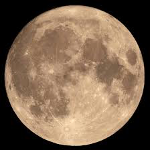|
Why Does the Date of Easter Move? Easter shall fall on the first Sunday following the first full moon following the spring equinox. So goes the pronouncement, made at the Council of Nicea in A.D. 325. That leaves a lot of room for maneuvering the date around. Unlike the static Christmas, Christianity's other big holiday, Easter moves every year, at least according to the calendars that most of us use to track the days, weeks, and months of a year. 
Passover, a major Jewish holiday, moves around in the same way, following the same spring equinox. The beginning of Passover directly coincides with the day of the full moon. The two holidays are never on the same day; so when the first full moon following the spring equinox occurs on a Sunday, then Passover occurs on a Sunday and so Easter is delayed a week. This helps to explain why Easter occurs so late in the calendar month some years. This still didn't work for many people, however, because the Council of Nicea had also set a date for the spring equinox of March 21 but, through the years, that date didn't always correspond with the full moon because of the slight variance between a lunar year and a calendar year. An update carried out in 1583 created a table of dates for what was called the Ecclesiastical Full Moon, and church leaders have used this table ever since. To wit, the first full moon after March 20 is Passover, and the Sunday following that is Easter (unless Passover is on a Sunday, in which case Easter is the following Sunday). The earliest date that Easter can possibly be each year is March 22. The latest date that Easter can possibly be each year is April 25. These dates are according to the Gregorian Calendar, which is used in most countries in which Christians live. Some Orthodox churches, however, still follow the Julian Calendar, which the Gregorian Calendar replaced in most countries progressively, starting in 1582. As a result, Orthodox Easter, falling in the same date range (March 22–April 25) on the Julian Calendar, occurs on different dates according to the Gregorian Calendar. The date is the same on rare occasions. The dating of Easter in this convoluted way was done to coincide with Passover, which is a weeklong observance. Easter is the Christian celebration of the resurrection of Jesus, which occurred during Passover week. Some church leaders in recent years have discussed setting a standard date for Easter. See also Why Are a Rabbit and Eggs Associated with Easter?. Have a suggestion for this feature? Email Dave. |
Social Studies for Kids |





